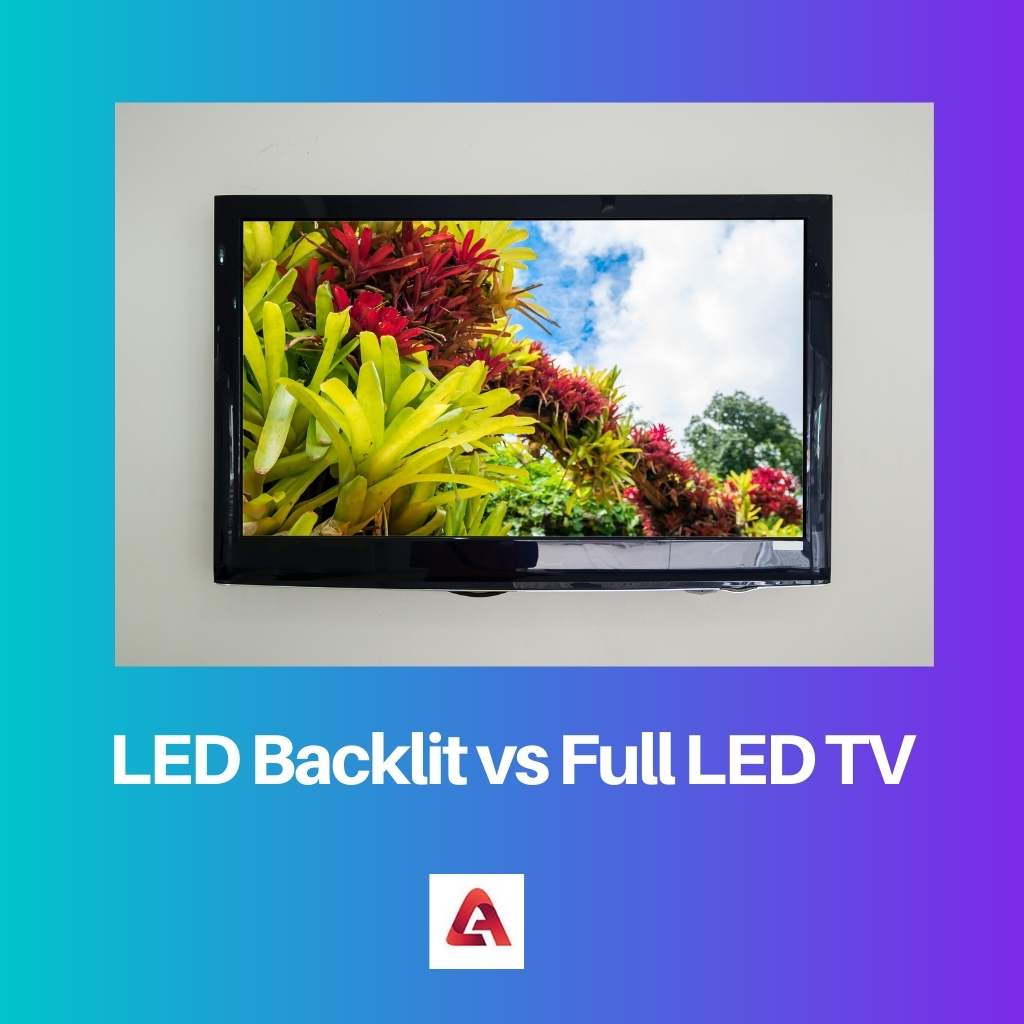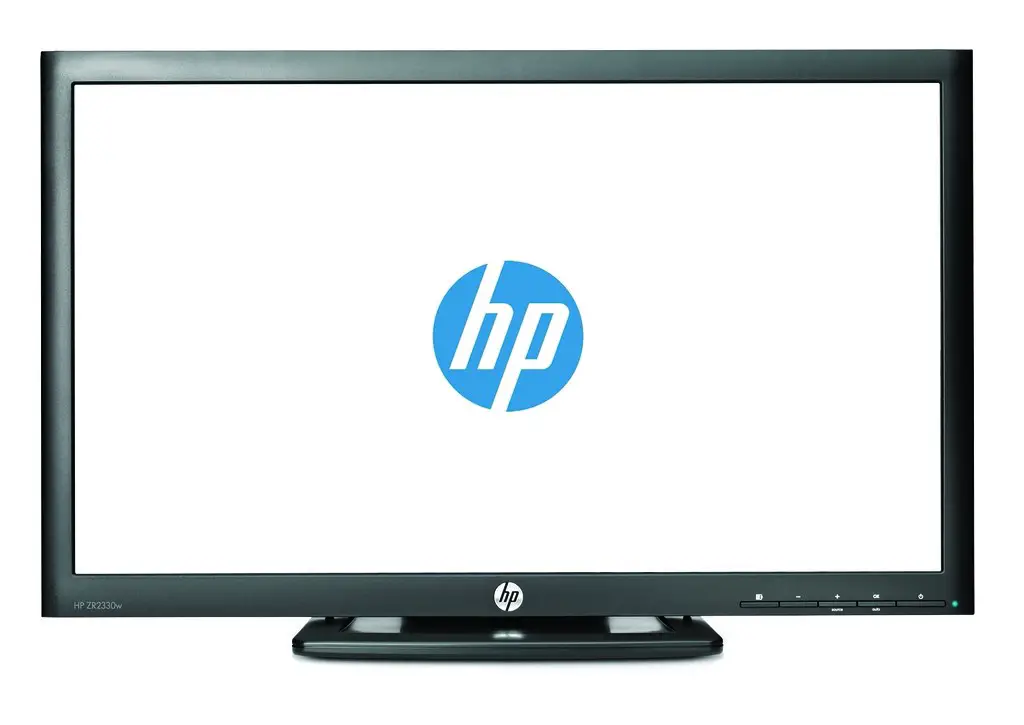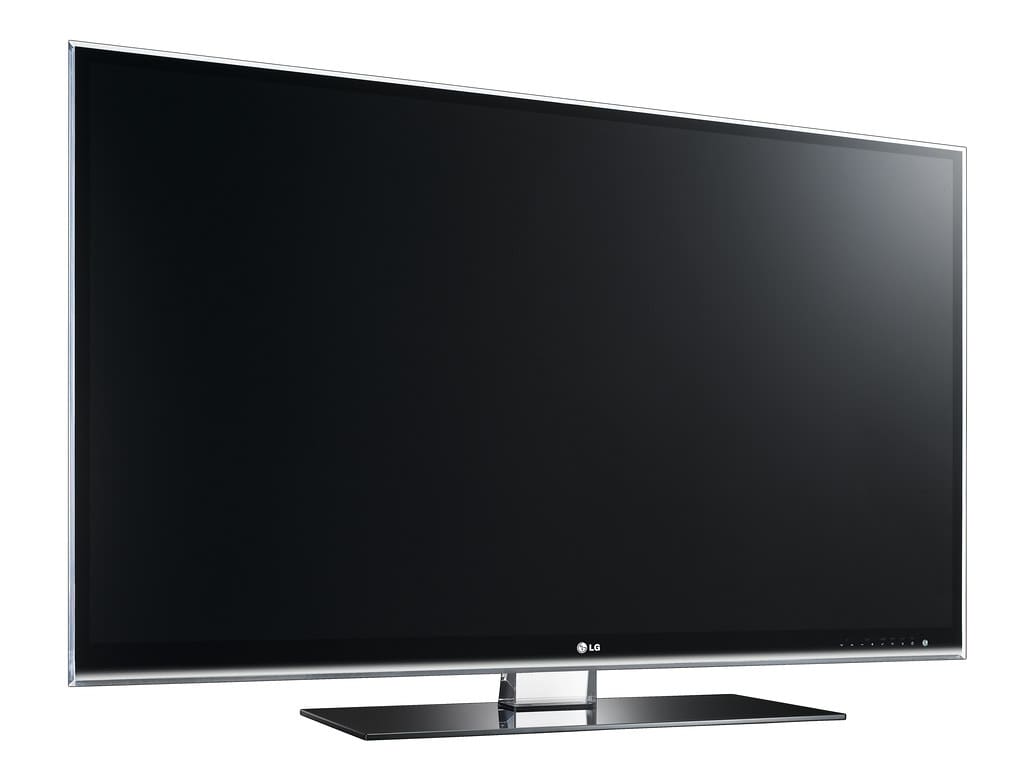The Light-Emission-Diodes are responsible for the backlights of a few televisions. Due to their high efficiency, LED TVs have been popular among various consumers around the globe.
Furthermore, these LEDs are either situated behind the screen, like full-array (Full LED TV), or at the edges/ sides of the screen, like LED Backlit TVs.
Key Takeaways
- LED-backlit TVs have LEDs placed around the edges of the screen, while full LED TVs have LEDs distributed evenly across the entire panel.
- Full LED TVs offer better uniformity, contrast, and brightness control than LED-backlit TVs.
- LED-backlit TVs are slimmer and more energy-efficient than full LED TVs.
LED Backlit vs Full LED TV
LED Backlit televisions have LEDs only on the edges or sides of the screen. Full LED TVs, on the other hand, have LEDs installed behind the screens, allowing them to spread out evenly across the entire screen of the television.

LED Backlit uses LEDs for backlighting the display rather than installing traditional cold cathode fluorescent backlighting.
In this way, the LED Backlit TVs emphasize the depth behind the subject and give images a greater sense of place. LED Backlit TVs also benefit your eyes by raising room ambient light and reducing eye strain.
On the contrary, Full LED TV, also popularly for its LED display, uses an array of light-emitting diodes as pixels to display the images. Due to their intense brightness, Full LED TVs are used outdoors.
Over time, it has been used in several transport vehicles for navigation and other display purposes.
Comparison Table
| Parameters of Comparison | LED Backlit | Full LED TV |
|---|---|---|
| Definition | LED Backlit TVs have LEDs either on the sides or at the edges of the screen. | Full LED TV has LEDs behind the screen; spreading out all over the display screen. |
| Display | It has a thin display screen and better viewing angles. | It has a thicker display screen. |
| Features | It has increased brightness and lesser power consumption. | Full LED TV has a great brightness range, contrast, efficiency, and more power consumption. |
| Advantages | Pixels that are illuminated from behind by the LED backlight appear richer and brighter; used mostly at homes. | It has been used in several transport vehicles for navigation and other display purposes. |
| Disadvantages | It has complex drive circuits; thereby complicating the flow of current supply or direction of illumination to the screen. | It doesn’t have local dimming, thereby the screen appears less bright at a few spots. |
What is LED Backlit?
Displays equipped with LED Backlights get their backlighting from LEDs instead of cold cathode fluorescent tubes.
LED Backlit TVs also benefit your eyes by raising room ambient light and reducing eye strain. Moreover, LED Backlit TVs have LEDs either on the sides or at the edges of the screen.
LED Backlit TVs, therefore, accentuate the depth behind the subject and enhance the sense of place when viewing images. The earliest backup lamps appeared in the 1920s, before the invention of light-emitting diodes in 1962.
Over time, manufacturers and suppliers have begun to advertise televisions using such a combination as an LED TV that incorporates both LED backlights and LCD panels.
The features of LED Backlit TVs include a thin display screen and better viewing angles, clear perception of images, better contrast ratios, color gamut, dimming range, lighter, cooler, reliable, lower power consumer, and longer lifespan.
Over and above, they have local dimming, which can be used to increase or decrease the brightness of the screen.
Due to their backlighting technologies, LED Backlit TVs have a longer lifespan, are environmentally friendly, have a flexible adjustment in luminous intensity, have low power consumption, are energy-efficient, and are less expensive than any other LED-based TVs.
However, LED Backlit has difficulty maintaining due to complex drive circuits, which complicates the flow of current supply or direction of illumination to the screen.

What is Full LED TV?
Full LED TVs, also known as LED televisions, display images using a grid of light-emitting diodes as pixels. Furthermore, Full LED TV is referred to as having LEDs behind the screen displays.
Due to their intense brightness, Full LED TVs are used for outdoor purposes. Over time, it has been used in several transport vehicles for navigation and other display purposes.
Hewlett-Packard (HP) originally developed and introduced the first practical LED display in 1968. Subsequently, in 1977. J.P. Mitchell became the first manufactured all-LED flat-panel TV.
TVs with full LED technology are brighter, have good contrast, are efficient, and consume more power. Because the LED from behind spreads uniformly throughout the screen, Full LED TV has a thicker display screen.
On the other hand, due to LED lighting over the screen, Full LED TVs consume more power. As a result, the intensity, brightness, and contrast of a Full LED TV are efficient.
Besides, Full LED TV doesn’t use local dimming, thereby sometimes producing a low-quality display at certain spots on the screen.
On the whole, due to the instalment of the backlighting bulbs behind the screen, clear, high-quality images can be produced using full-array LEDs.

Main Differences Between LED Backlit and Full LED TV
- LED-backlit uses LEDs only at the edges or sides of the televisions. Meanwhile, Full LED TVs have LEDs instalments behind them, which are spread out evenly over the entire screen of the television.
- Full LED TVs have more lighting throughout the screen. In contrast, lighting is installed only at the edges of the TVs, eventually having lesser lighting than the former.
- LED Backlit TVs consume less power than Full LED TVs.
- The proportion of LEDs is higher in Full LED TVs than in LED Backlit TVs.
- A Full LED TV’s intensity, brightness, and contrast are better than LED Backlit.
- The ability to control the brightness of the LED at certain spots on display is a possible feature for LED Backlit TVs but not for Full LED TVs.
- The displays of LED Backlit are thinner than the displays of Full LED TVs.






